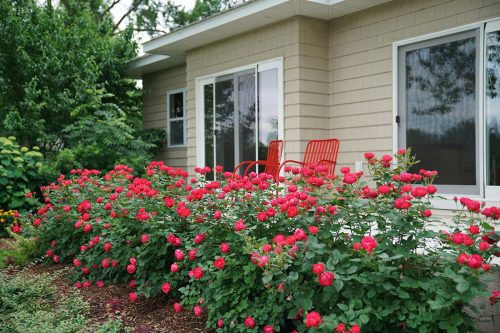Ready to start a new garden? We are here to help you achieve your goals! There is a lot that goes into cultivating a new garden, but before you begin, there are seven questions you should ask to set yourself up for success. At the end, we’ll direct you to the next steps in the process.
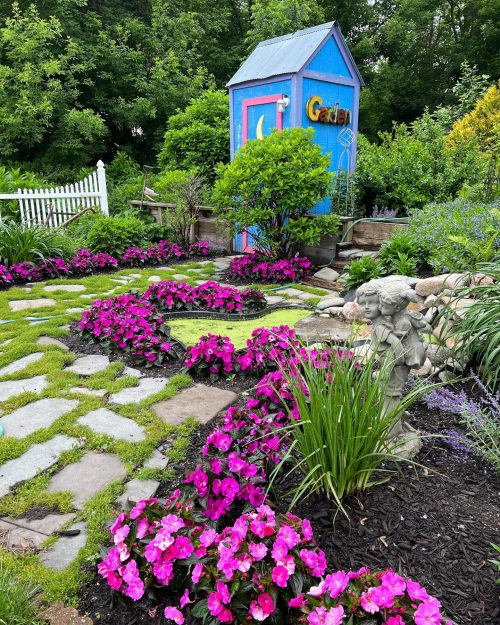
Question 1: What are you trying to accomplish?
Achieving your vision starts with setting goals. Ask yourself what you are looking to accomplish by starting a new garden. Perhaps you want to establish a new vegetable garden to help achieve your goal of eating healthier this year. Maybe you’ve just been gifted some plants by a family member or neighbor and need someplace to plant them. Or you’ve just moved into a new home that is in dire need of some new landscaping. Set your intentions at the outset – everything else that follows will be predicated on these goals.
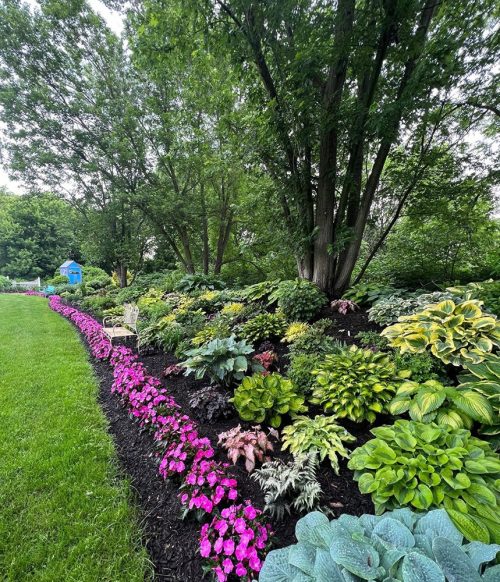
Question 2: Where will your new garden be located?
Take a look around your yard to assess where you have space to add a new garden. If you’ve set a goal to grow edible plants, you’ll need to choose a place that is in full sun. If you want to collect interesting shade plants, find a spot in morning sun to full shade, preferably not under a canopy of shallow rooted trees like maples. Every garden needs water, so consider where the nearest source is to the spot you’ve chosen. What is the soil like in that area? Do the plants you want to grow tolerate that kind of soil? Logistics like these are critically important to consider at the outset.
Also, think about where your new garden will be seen from each day, perhaps out your kitchen window or from your driveway as you arrive home from work. There’s no sense in creating a new garden where you won’t be able to enjoy it. Think about how far away from your house that space is and whether that distance is practical for hauling gardening supplies, the hose, your harvest, etc.
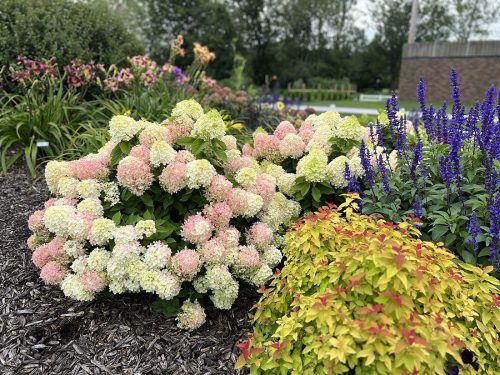
Question 3: What kinds of plants do you want to grow?
With so many interesting plants available, it can be difficult to narrow down your wish list. You could start with a few plants you have wanted for a long time. This might just be the year you install that hydrangea hedge you’ve been dreaming of. Another way to start your plant list is by considering the conditions you are facing that aren’t easily changeable. For example, you might need plants that are deer resistant or perennials that can handle your clay soil. If there are certain plants you have your heart set on, be sure to site your new garden in a place that can support their healthy growth. Explore all of the annuals, perennials, shrubs and edible plants we offer.
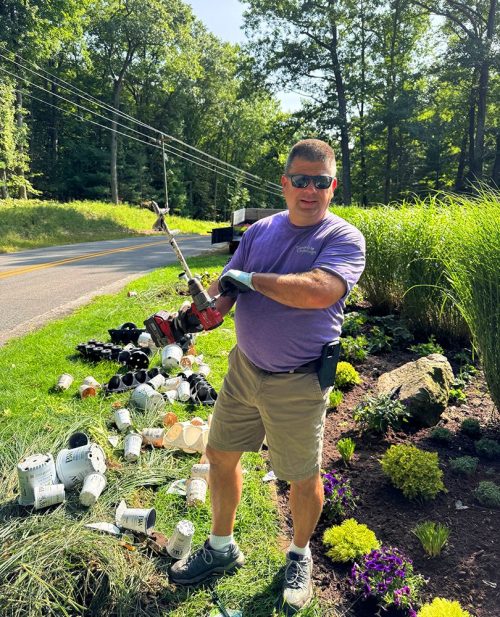
Twist ‘n Plant® garden augers make quick work of planting!
Question 4: Who will install your new garden?
When people think about starting a new garden, it’s common to skip right over the logistics to the fun part – shopping for new plants. In reality, buying the plants to fill your new garden is the reward that comes near the end of the process. First, you or someone you hire will need to do the work of preparing the site. That might include stripping away sod, amending the soil, reconfiguring irrigation lines and heads, or adding in hardscaping like a pathway, retaining wall or edging. Before you begin, assess who would be best at installing your new garden and what fits your budget. This is where the rubber hits the road – where your dream of a new garden may face some practical hurdles.
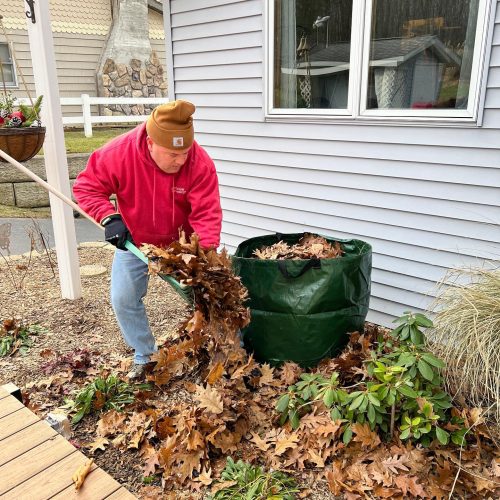
Question 5: How will you maintain your new garden?
Once you’ve dedicated your time and funds to installing a new garden, you will want to maintain your new investment. Watering, weeding, fertilizing, mulching, pruning and harvesting are a few maintenance items you will need to plan for. If yours is a family garden, specific tasks could be assigned to certain family members. Doing so helps to create a sense of ownership of the space as you all work together to grow your new garden.
Conversely, if you will be the only person maintaining it, consider how much you can realistically handle given your available time and energy to devote to the task. It’s better to start small, then scale your garden up as more resources become available, than to bite off too much and become completely overwhelmed, risking quitting before you accomplish your goal.
One additional consideration is the tools that will be needed to maintain the garden you are installing. You wouldn’t plant a lawn, for example, if you didn’t own a lawnmower or have a service to mow it for you. Basic garden tools such as spades, trowels, pruners, pruning saw, rakes, watering cans and a wheelbarrow or cart will be needed if you want to grow and maintain a garden.
Question 6: How long do you plan to have this garden?
Most, but not all, gardens stay put once they are established. How long do you plan to reside where you are installing a new garden? If you think you will move within the next five years, consider how new landscaping could enhance the value of your home for resale. Fresh foundation plantings, for example, can boost a home’s curb appeal to make it attractive to more buyers. Or perhaps you are starting a new family in your home and want to install a new vegetable garden that will feed your children for many years to come.
If it’s likely that you won’t have decades to enjoy your new garden before you leave it, start with larger-sized plants. Starting too small will be far from satisfying given all your hard work, plus it can mean spending more time weeding open ground rather than enjoying the time you have left there. Larger plants will also help you achieve an established-looking landscape faster that will appeal to future buyers.
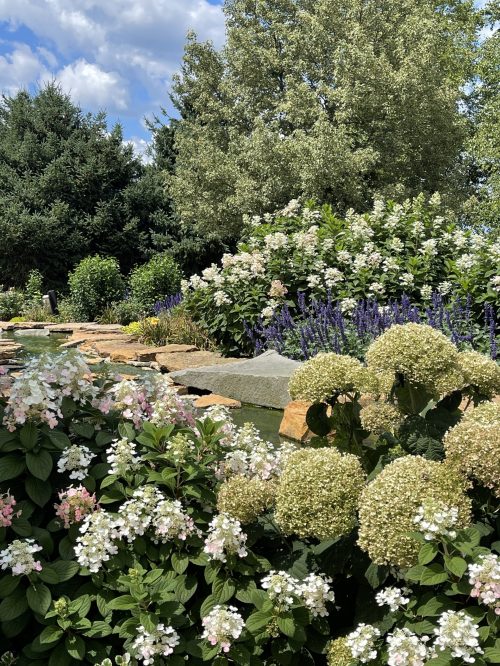
Question 7: What is your budget?
It’s a practical but necessary question we all must ask ourselves – what can I afford? For many of us, our desires tend to be bigger than our budgets. Consider these ways to maximize your gardening budget to achieve the look you are going for.
- Start with a smaller space. Perhaps your new garden is a six-foot square plot that you cultivate intensively, packing in your top five must-have new plants. As your budget allows and plants mature, you can gradually increase the plot’s size.
- Grow plants that deliver the best bang for the buck. Some plants stand head and shoulders above the rest, either because they are quick to mature, produce more flowers, or fill a lot of space. Include at least a few to create a full-looking garden faster with fewer plants.
- Divide plants you already have. Look around your landscape to see which plants you already own that could be divided and moved into your new garden space. Perennials like sedum, daylilies, iris and hostas are good candidates because they benefit from being divided every three to five years.
- Swap plants with friends. Trading plants is an easy way to gather what you need to start a new garden. Plant swaps are common in towns across America and typically take place in the spring and fall. Beware, however, that people tend to give away plants that have spread out of bounds, and they might do the same in your own garden. There is also a risk of inheriting “hitchhikers” along with giveaway plants, including invasive pests like jumping worms and red lily leaf beetles, which can devastate certain plants. It may be safer to trade plants with a neighbor since you already share these garden challenges.
Once you’ve completed the seven assessment questions above, you’ll be ready to move on to the next step in the process of creating a new garden. Here are three additional resources to study next as you continue down that path:
- Gardening 101 – Learn the lingo of gardening including what terms like “full sun” mean, details about fertilizing different kinds of plants, pruning tips and more.
- Garden Advice from a Pro – A seasoned gardener shares wisdom she has gained from 20+ years of growing gardens.
- How to Start a New Garden in 10 Steps – Ready to get started? Follow these ten steps to grow a new garden.

